New Superhouse show captures the rebellious spirit of Dan Friedman’s Manhattan apartment
In the late 1970s, graphic designer and artist Dan Friedman transformed his apartment into a Day-Glo laboratory of ideas. Now, a new exhibition at Superhouse in New York revisits his vibrant, rebellious world
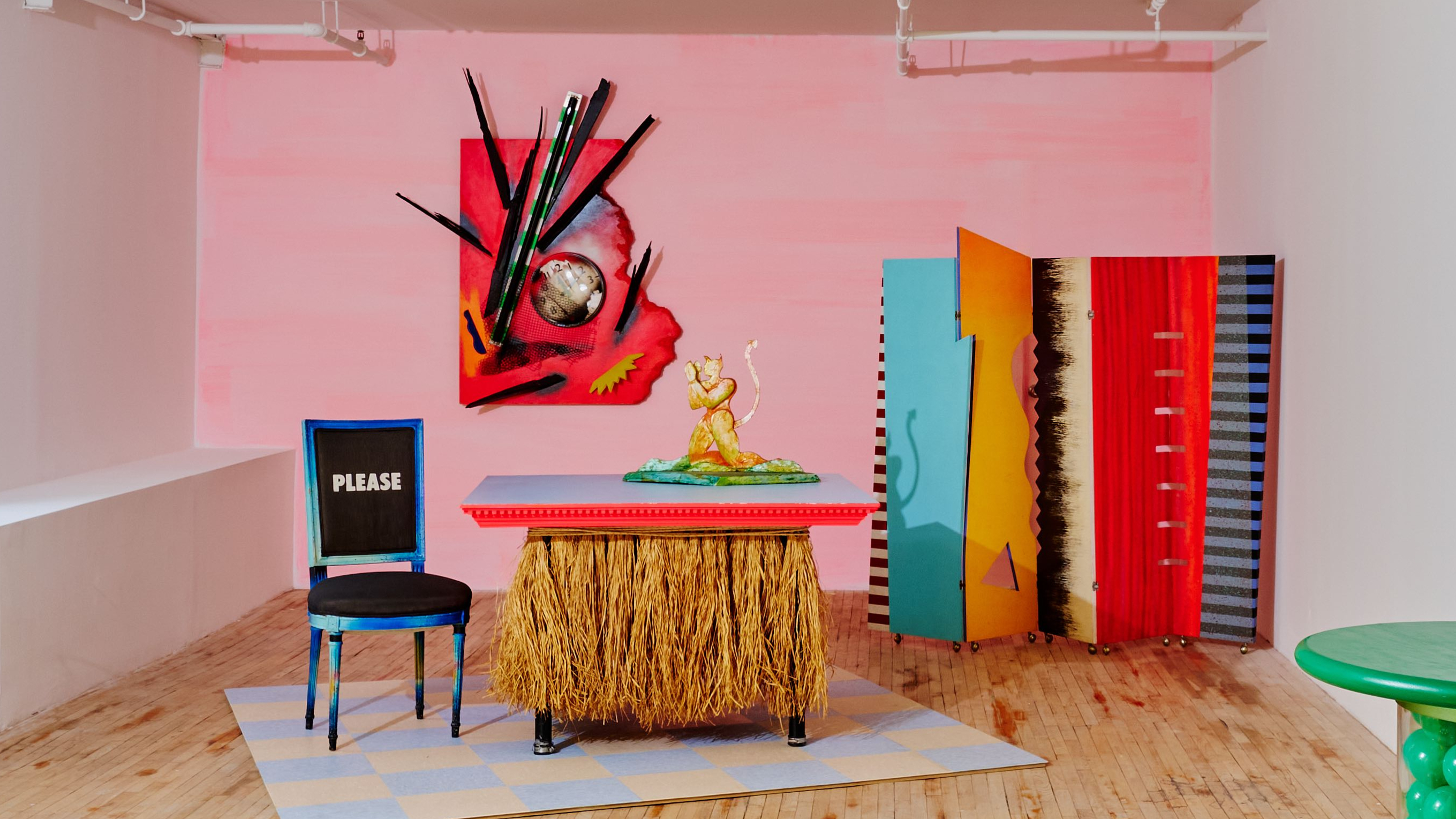
New York gallery Superhouse opens 'Why Shouldn’t I Have Fun All Day?' today (6 February 2025), the first solo exhibition of pioneering graphic designer and artist Dan Friedman since his passing 30 years ago. Staged in collaboration with the artist’s estate, the show offers an intimate look at his artistic and domestic world, recreating the vivid, experimental environment of his apartment – an ever-evolving work of art in itself.
In the gallery space, works are set against Day-Glo-painted walls, the same colours Friedman used, interspersed with his personal effects. The exhibition brings together pieces from his own collection as well as those of close friends and family, capturing the spirit of a designer who rejected convention in favour of play, provocation, and a radical rethinking of modernism.
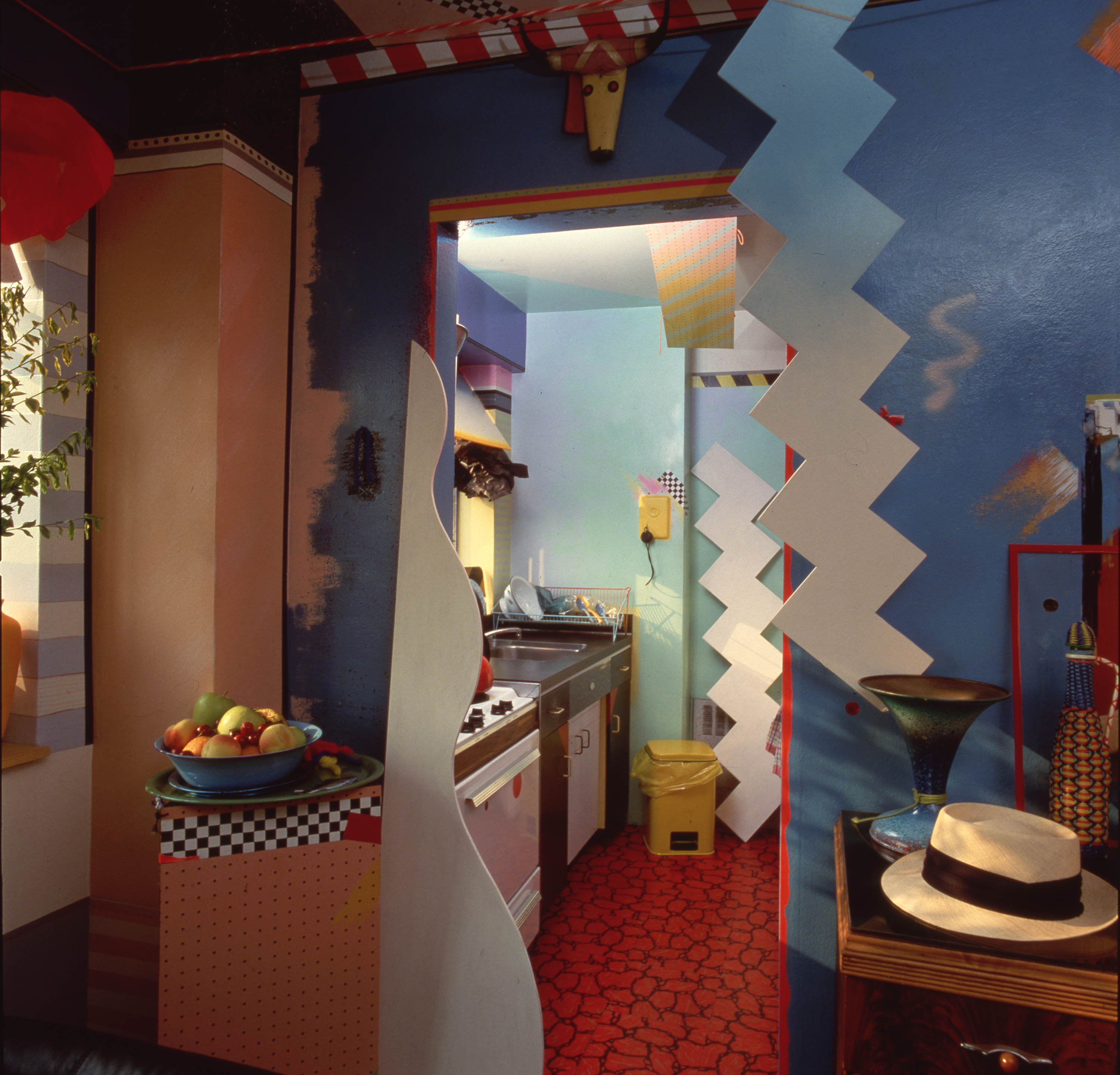
The show recreates the vivid, experimental environment of Friedman's Greenwich Village apartment, shown here, where he lived from the late 1970s until his death in 1995
In the late 1970s, Friedman was a corporate design executive and Yale professor living in a one-bedroom high-rise apartment overlooking Washington Square Park. By day, he worked at the design consultancy Pentagram, producing precise but often humourless posters, letterheads, and logos for corporate clients such as Citibank. But he was growing restless. 'I began to live a double life – out at night, meeting non-designers, artists,' he later recalled. 'I realised I was having more fun working at night in this other world, this other side of New York City. I thought, "Why shouldn’t I have fun all day?"'
‘I created an extreme caricature of the beautiful modern American home to bring into question our notion of what is a beautiful modern American home’
Dan Friedman
At home, his apartment became an outlet for his pent-up creativity – a kind of three-dimensional sketchbook where he experimented with shape, volume, and colour. Every surface – walls, ceilings, even appliances – became a canvas for his work. Found objects from around the city were transformed into extravagant Day-Glo furniture and lighting, painted in fluorescent hues, as he challenged conventional notions of good design. 'I created an extreme caricature of the beautiful modern American home to bring into question our notion of what is a beautiful modern American home,' he explained.
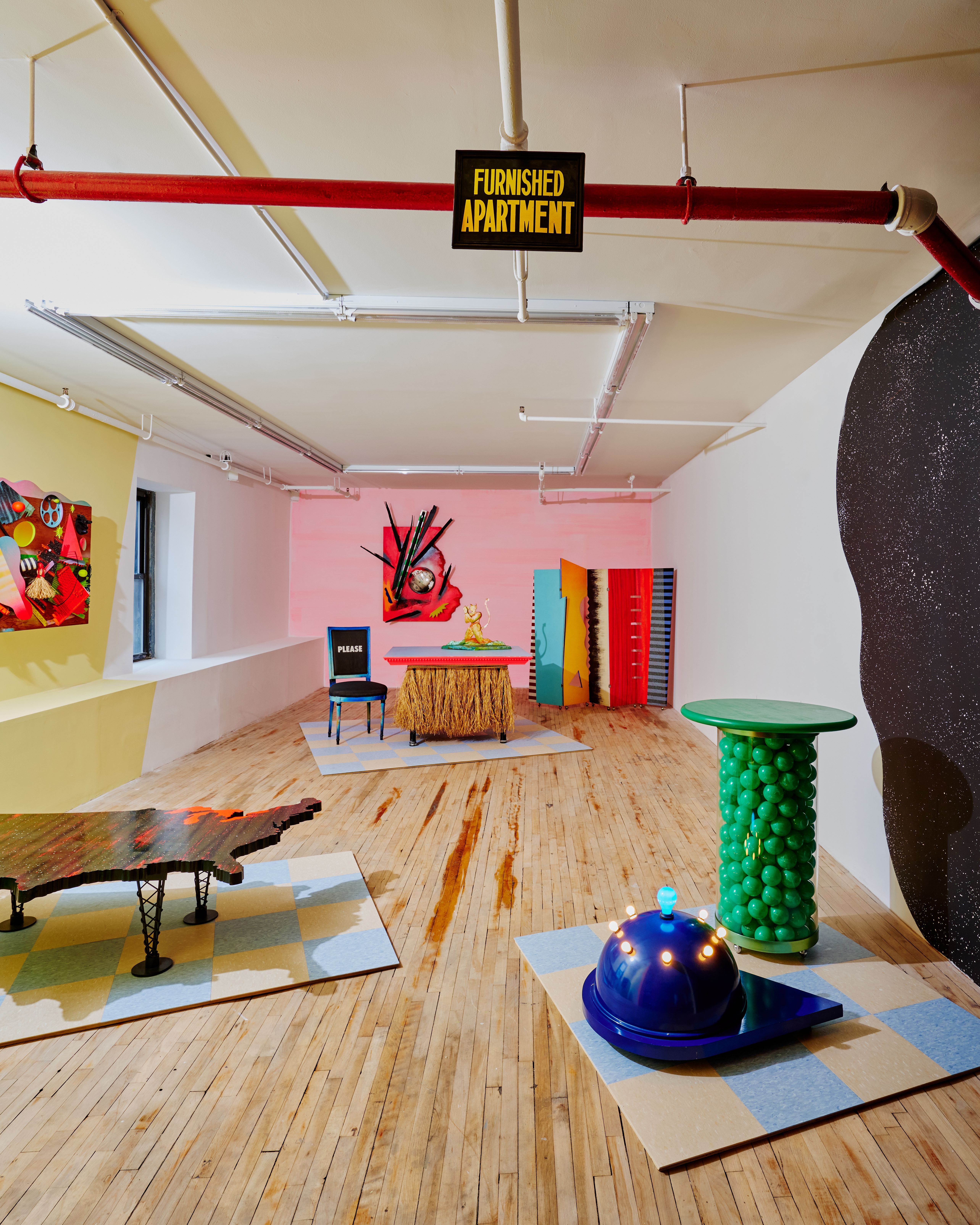
Staged in collaboration with the artist’s estate, the exhibition brings together pieces from his own collection as well as those of close friends and family
Disillusioned with corporate design, he left to devote himself fully to making three-dimensional objects – works rich in complexity and symbolism, shaped by the chaotic, media-saturated, and culturally diverse world of lower Manhattan. During this highly productive period, which lasted until his death from AIDS-related complications in 1995, Friedman became a central figure in the Lower East Side art scene. He formed close friendships and creative exchanges with contemporaries such as Keith Haring, Kenny Scharf, and Willi Smith. As the pioneer of American Radical Modernism, his New Wave typography – an energetic, experimental style – drew from punk and postmodern language theory.
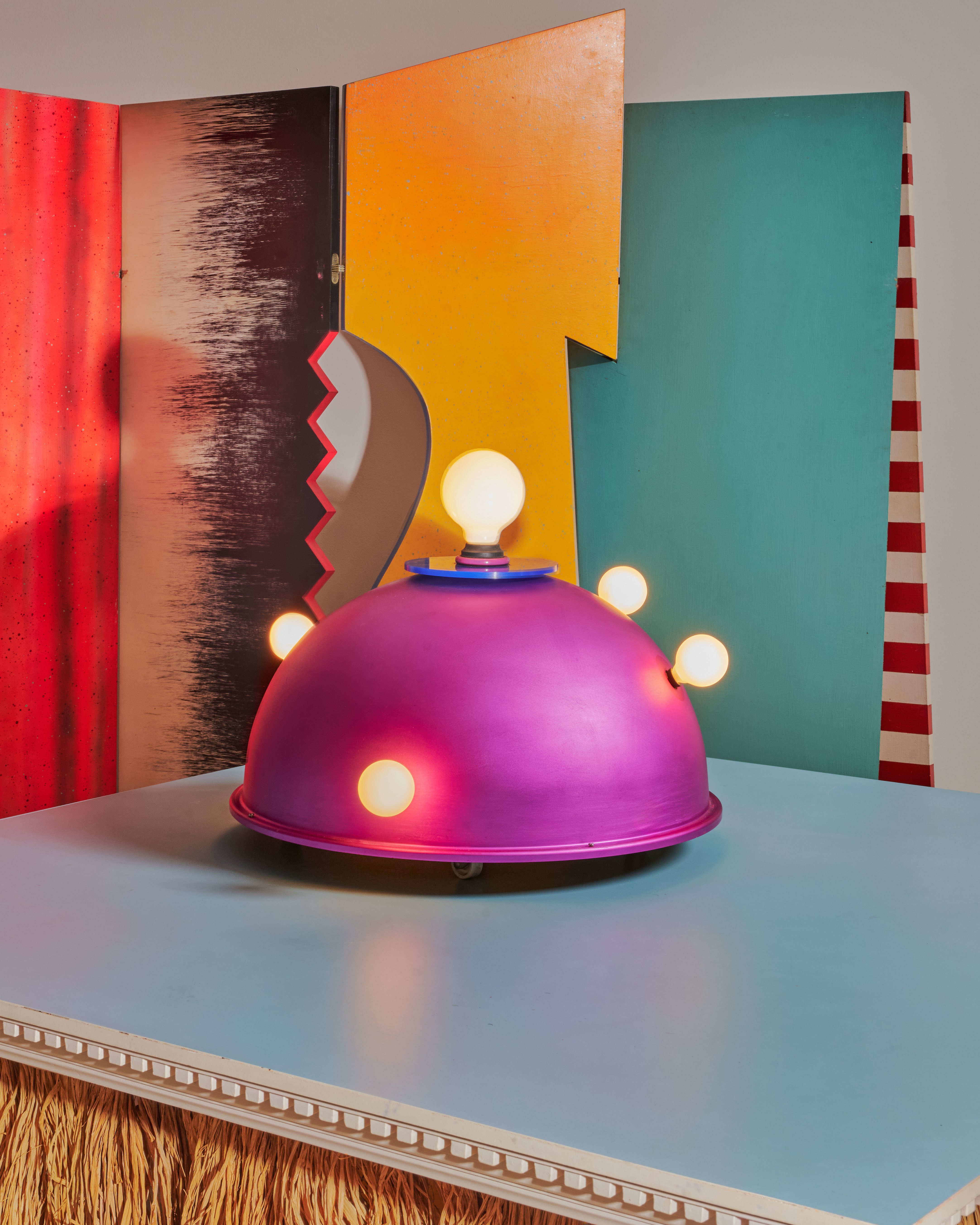
Works are set against Day-Glo painted walls, the same colours Friedman used, interspersed with his personal effects
‘Why Shouldn’t I Have Fun All Day?' brings this radical spirit into focus and shows how his approach is still relevant today, perhaps more than ever. Displayed works include 'Basic Screen' (1981), Friedman’s first folding screen and an early reflection of his embrace of the graffiti-covered urban landscape. (He would go on to create numerous screens on casters – his 'movable walls' – to reflect shifting moods, objects, and seasons.) Also featured is 'Wicky Wacky Table' (1981), a dining table with a grass skirt and a classical dentil cornice, a playful nod to Friedman’s love of kitsch and pastiche. Another highlight is 'A Fallen Sky in a 'Regal Landscape' (1985), a neon-coloured assemblage of city detritus that once held pride of place in his home. It stands as a critique of American consumerism’s wastefulness.
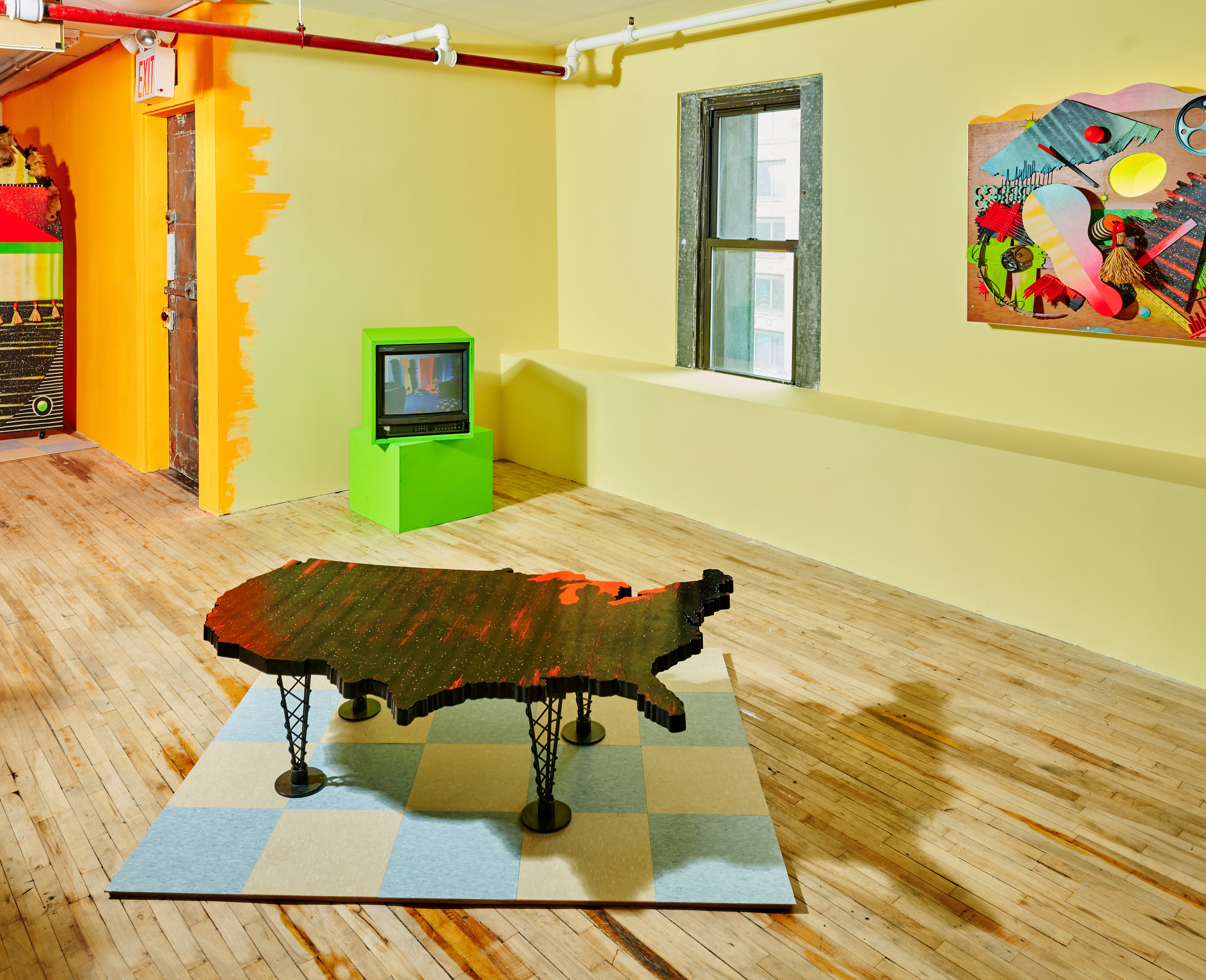
Friedman believed designers and artists should work with passion and responsibility, using culture, diversity and fantasy to try and shape a better society
'I have used my home to push modernist principles of structure and coherency to their wildest extreme,' Friedman wrote the year before his death in Radical Modernism (Yale University Press), his 12–point treatise for life and work – essential reading for all creatives. 'I create elegant mutations, radiating with intense colour and complexity, in a world that has deconstructed into a goofy ritualistic playground for daily life.'
Receive our daily digest of inspiration, escapism and design stories from around the world direct to your inbox.
'Why Shouldn’t I Have Fun All Day?' runs from 6 February to 22 March 2025, at Superhouse, 120 Walker Street, 6R, New York, NY 10013
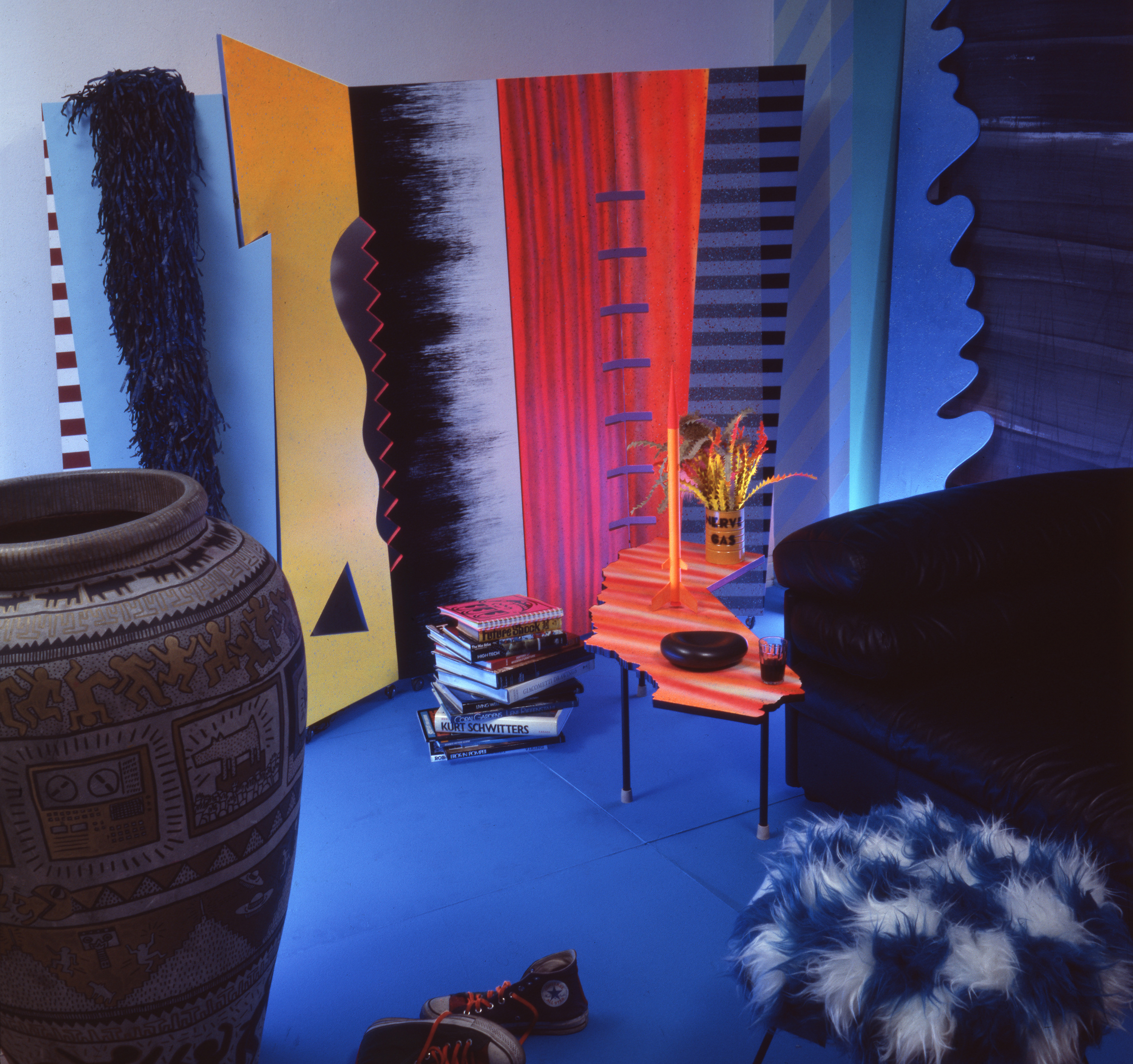
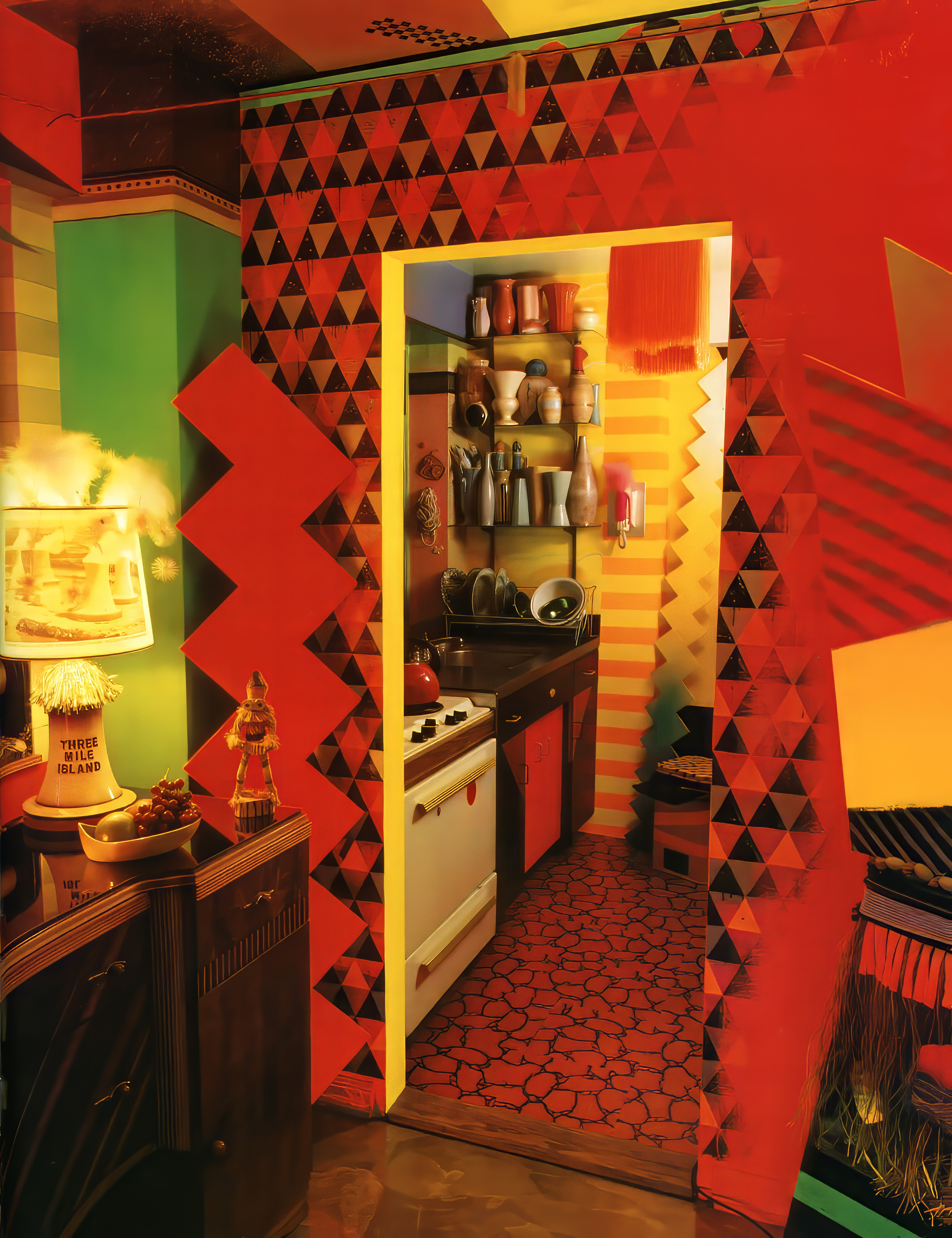

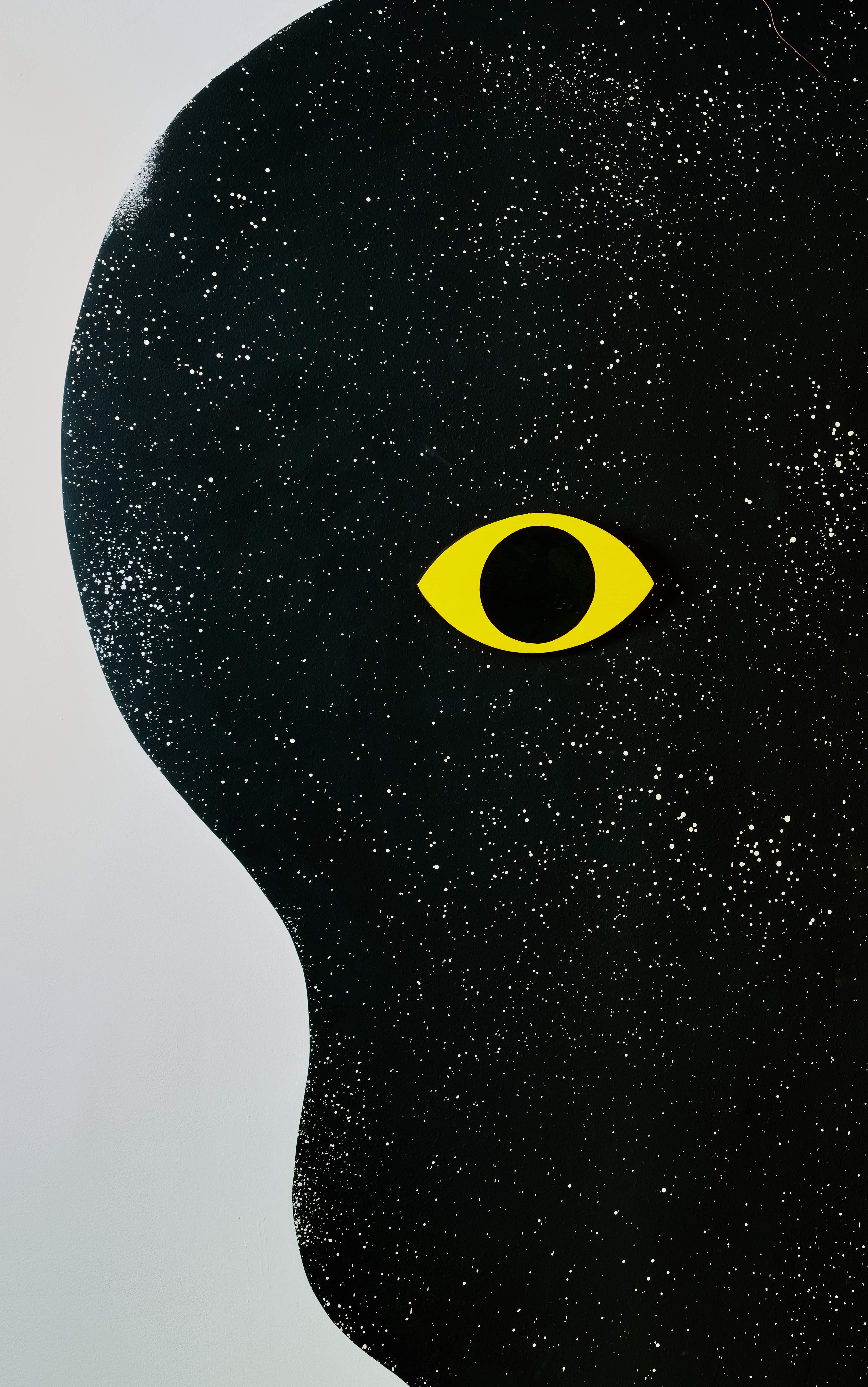
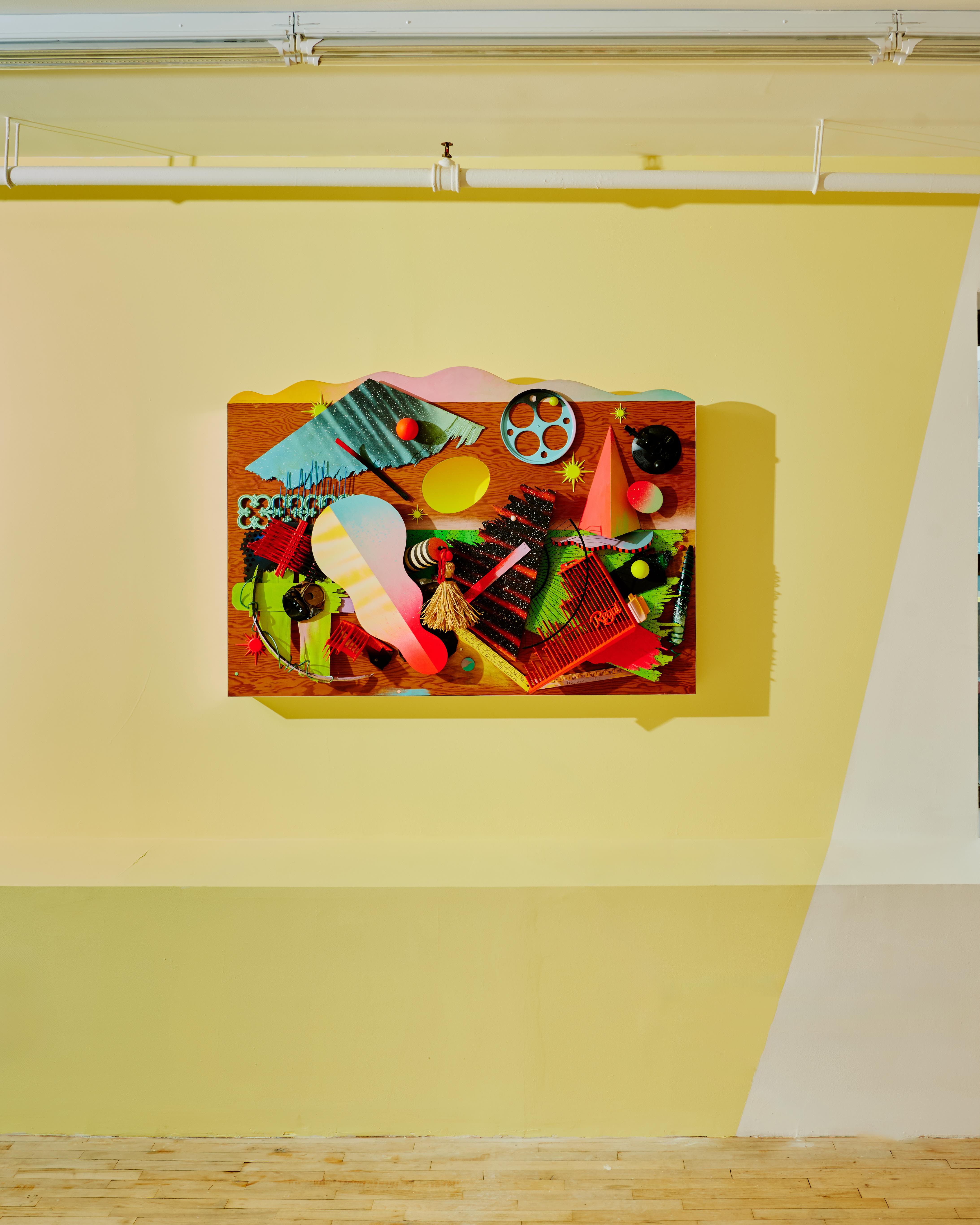
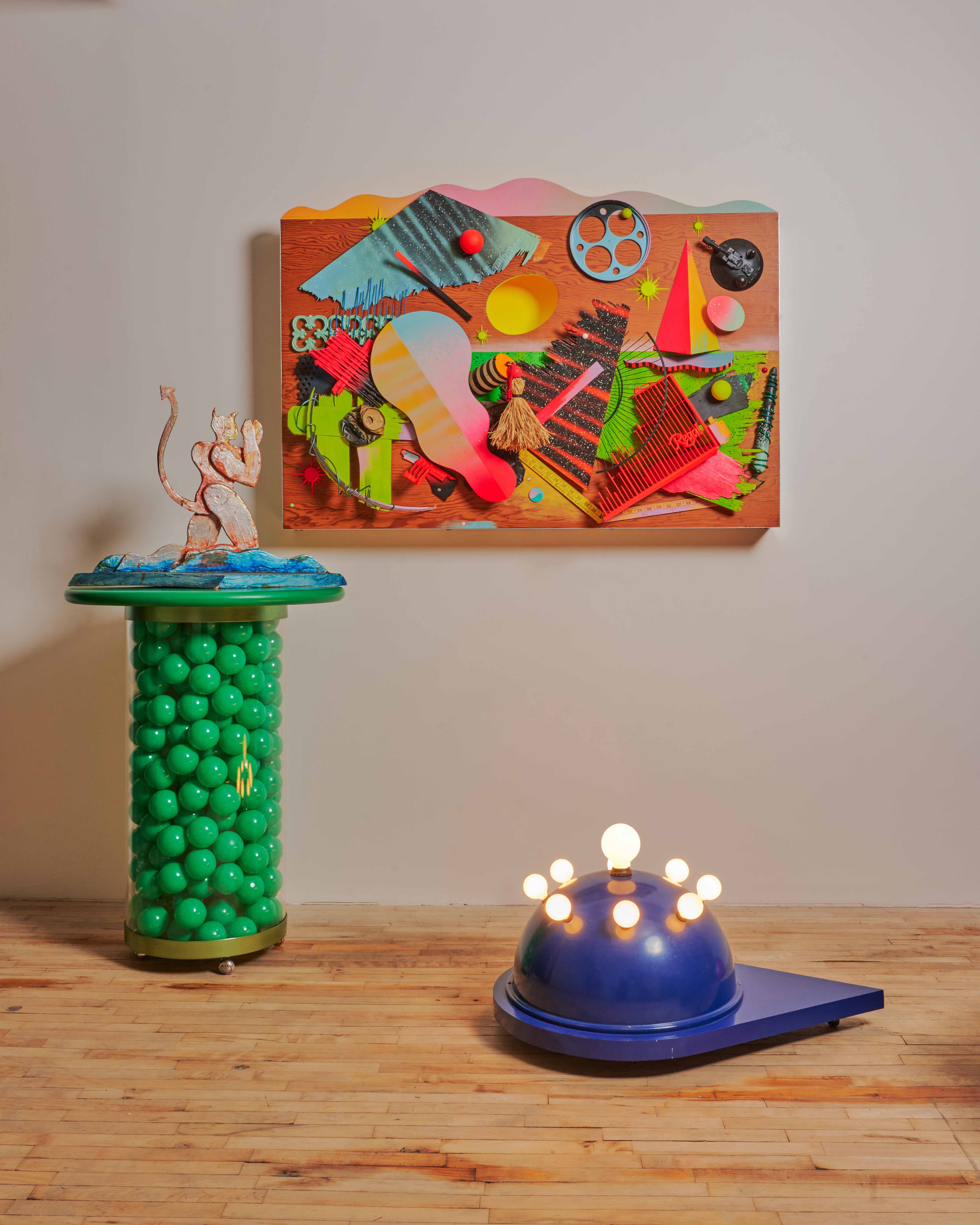
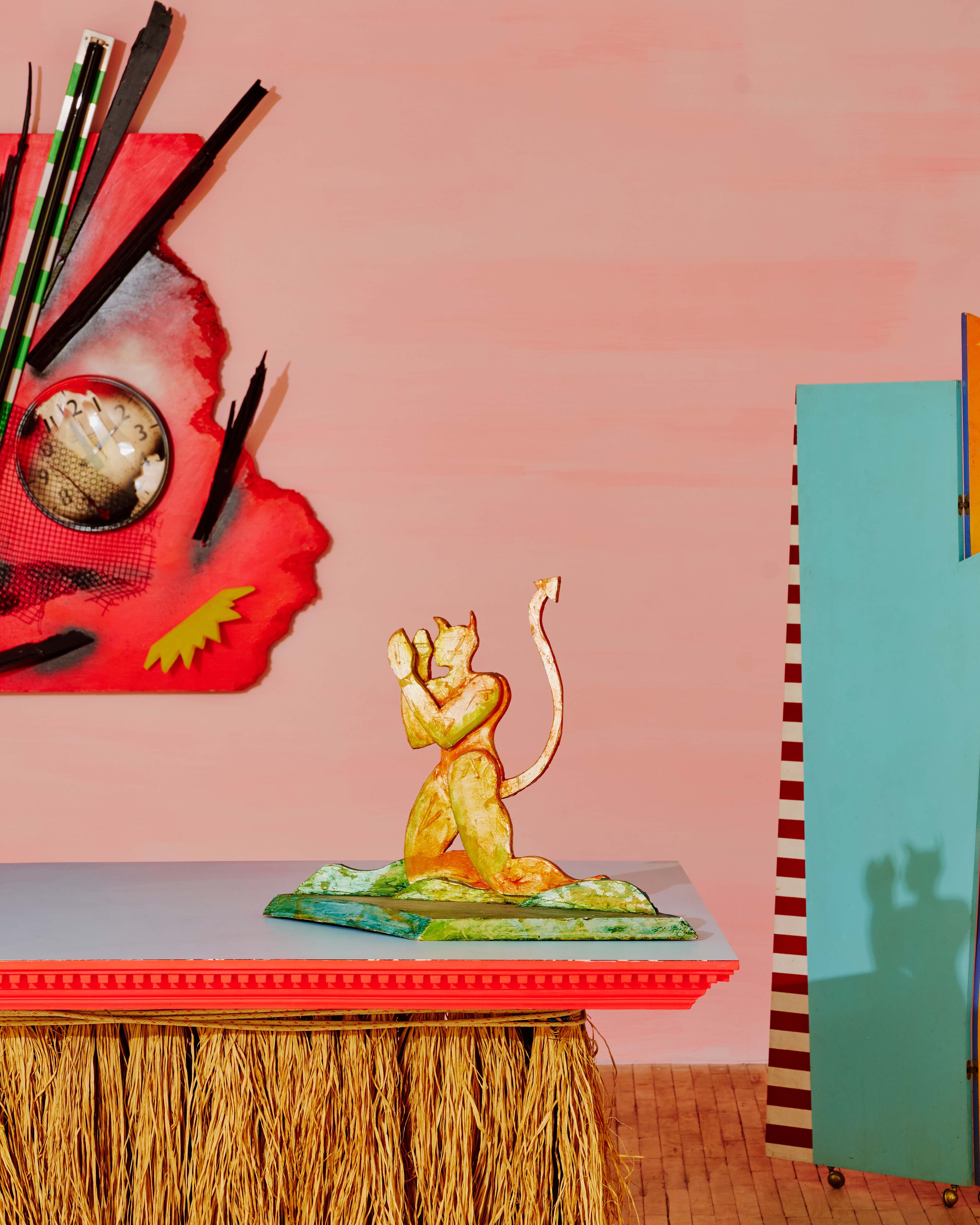
Ali Morris is a UK-based editor, writer and creative consultant specialising in design, interiors and architecture. In her 16 years as a design writer, Ali has travelled the world, crafting articles about creative projects, products, places and people for titles such as Dezeen, Wallpaper* and Kinfolk.
-
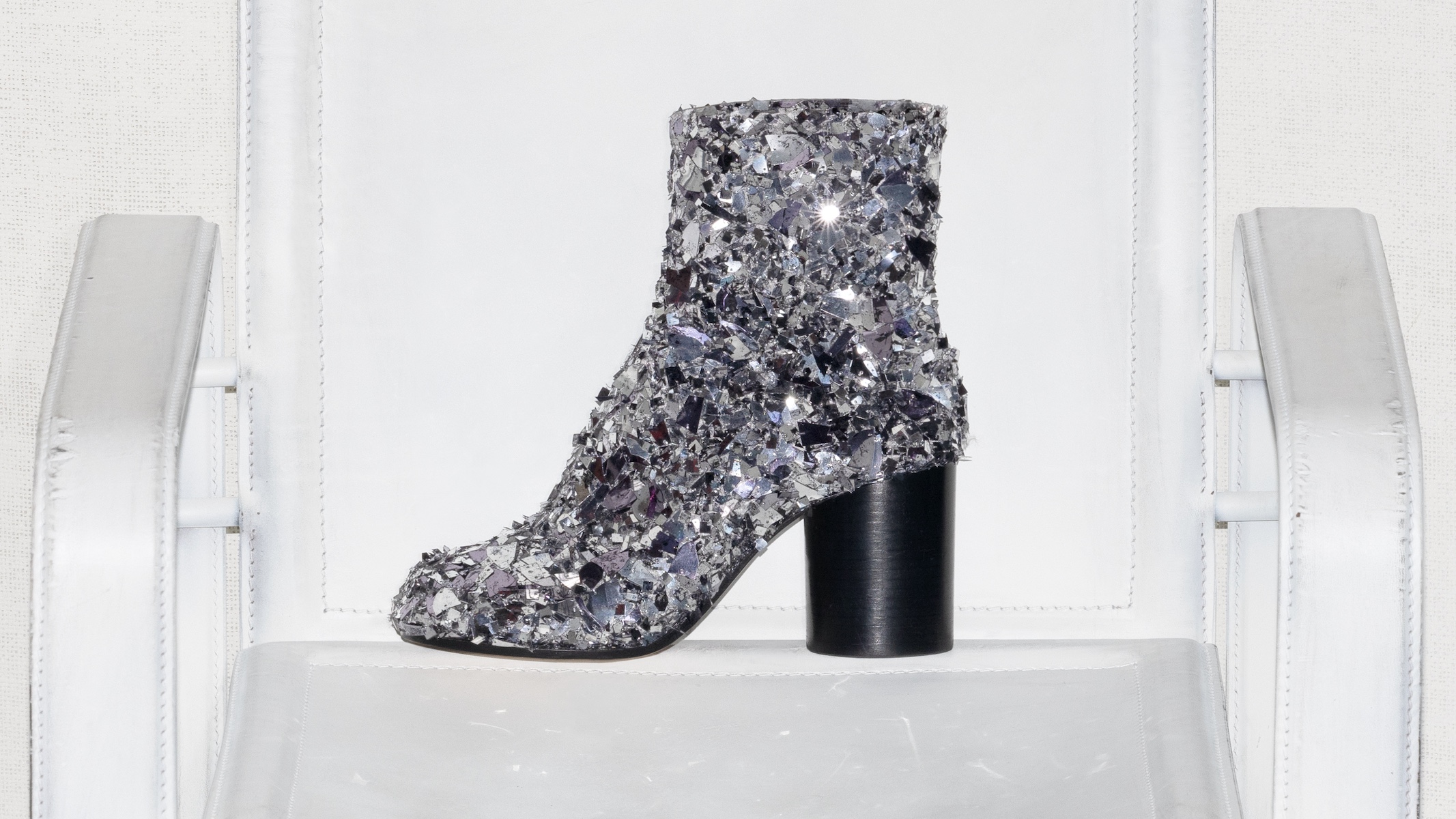 This is your chance to invest in some ultra-rare Maison Margiela Tabi boots
This is your chance to invest in some ultra-rare Maison Margiela Tabi bootsPart of the new ‘Tabi Collector’s Series’, these one-of-a-kind Tabis are adorned with 8,000 hand-embroidered beads, sequins and metallic shards – an ode to the pioneering split-toe style, introduced by Martin Margiela in 1989
-
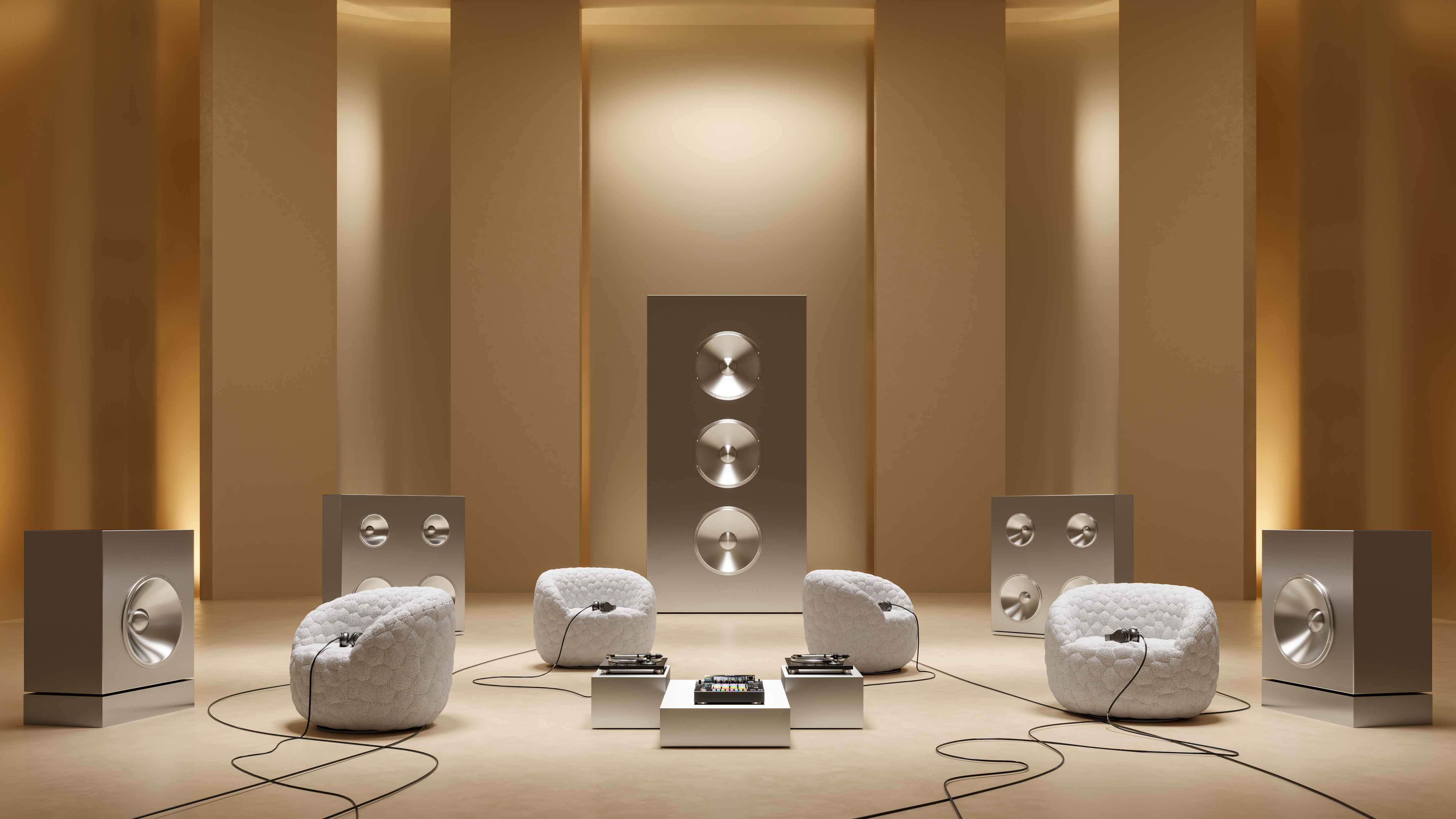 Robbie Williams' chair for Moooi 'is a complete mood'
Robbie Williams' chair for Moooi 'is a complete mood'Softly padded and cocoon-like, Robbie Williams’ Introvert chair makes a surprisingly gentle addition to Moooi’s theatrical universe
-
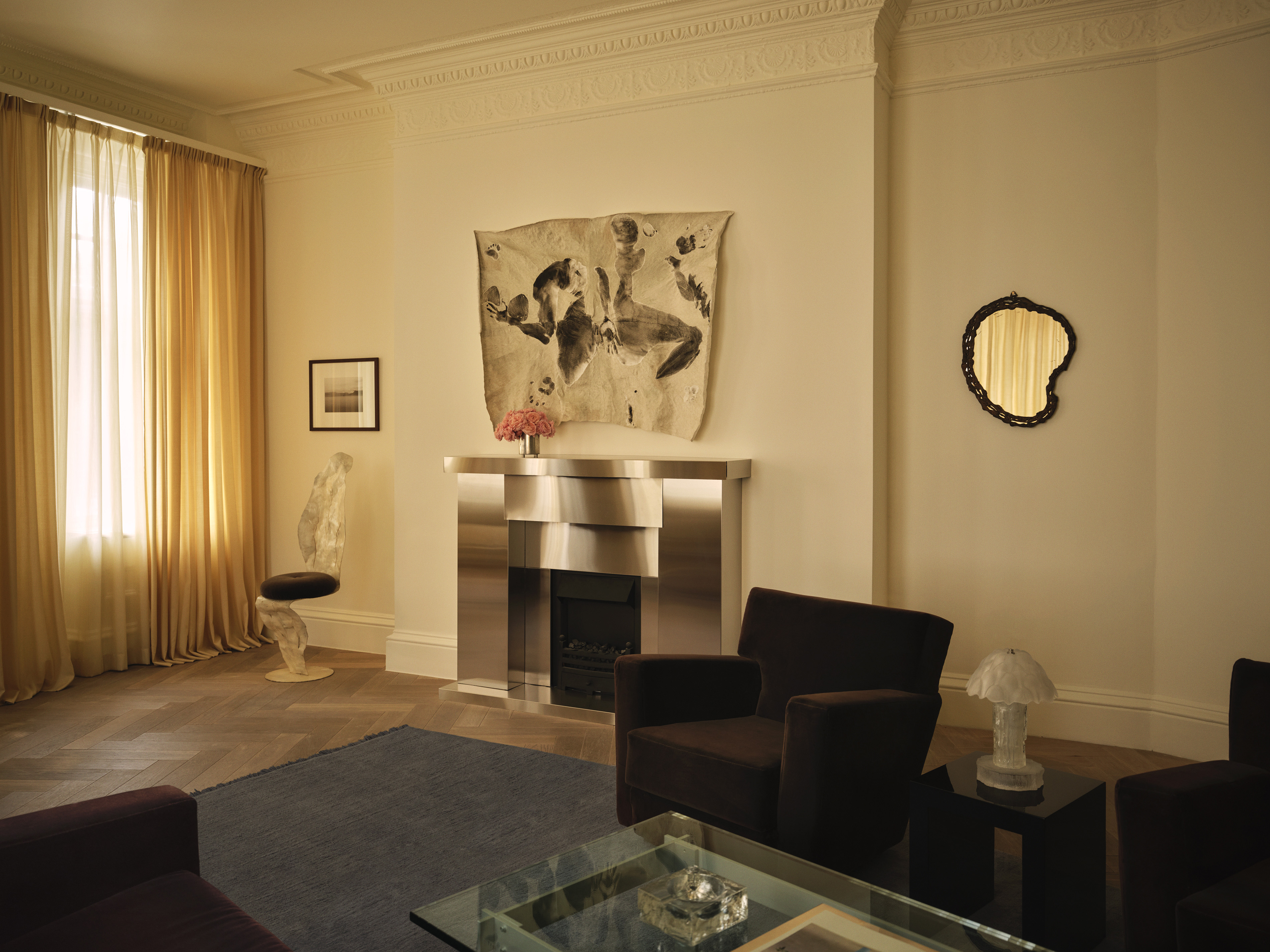 Nordic Knots arrives in London with a stylish pied-à-terre in Mayfair
Nordic Knots arrives in London with a stylish pied-à-terre in Mayfair‘Design has always been about creating a feeling’: Nordic Knots brings its vision of home to Mayfair
-
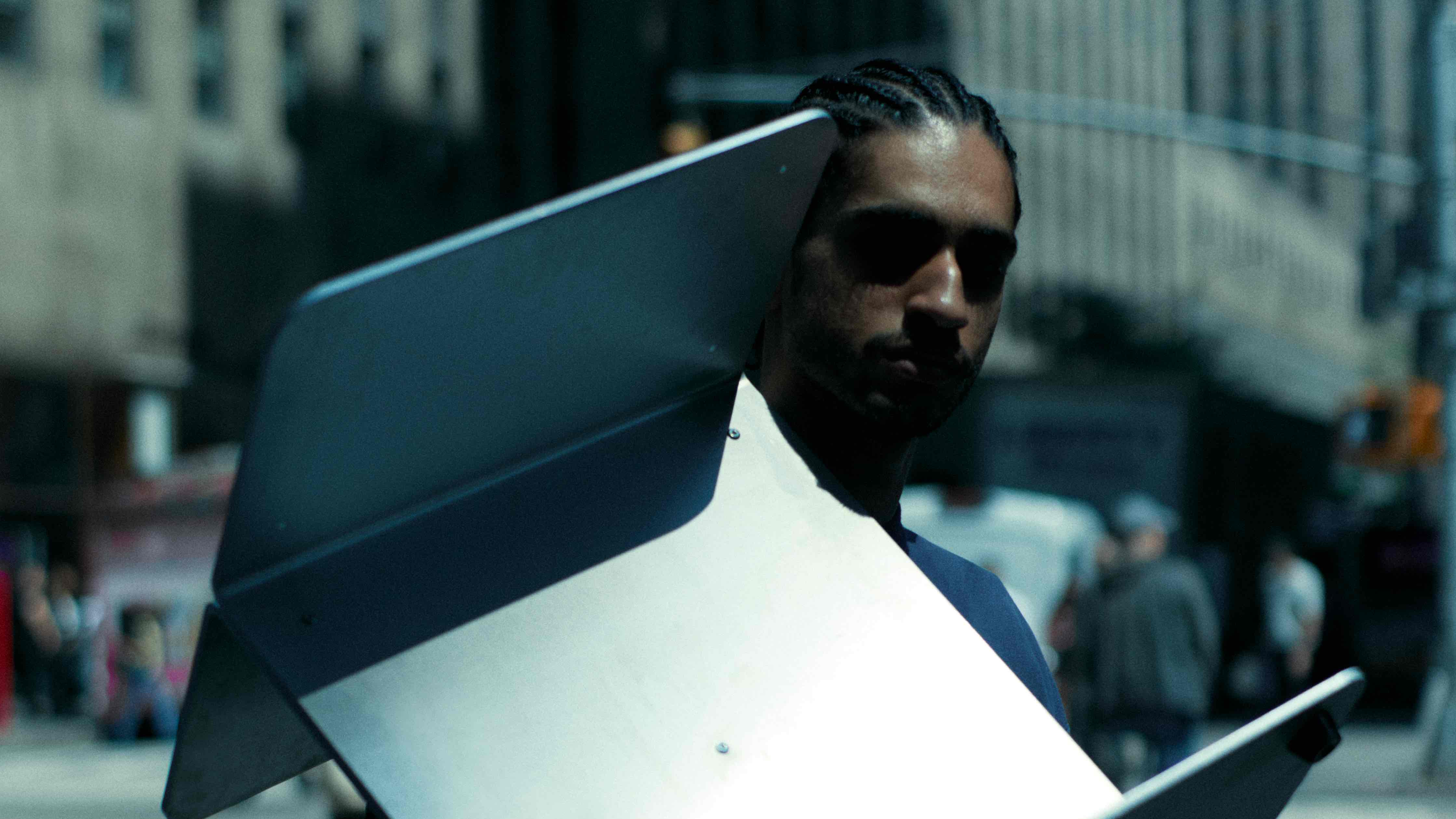 Meet Goodesign, the modular furniture studio with big dreams
Meet Goodesign, the modular furniture studio with big dreamsWallpaper* speaks to Emmanuel Popoteur, the self-taught designer behind New York’s Goodesign, a studio creating intuitive, adaptable furniture for modern living
-
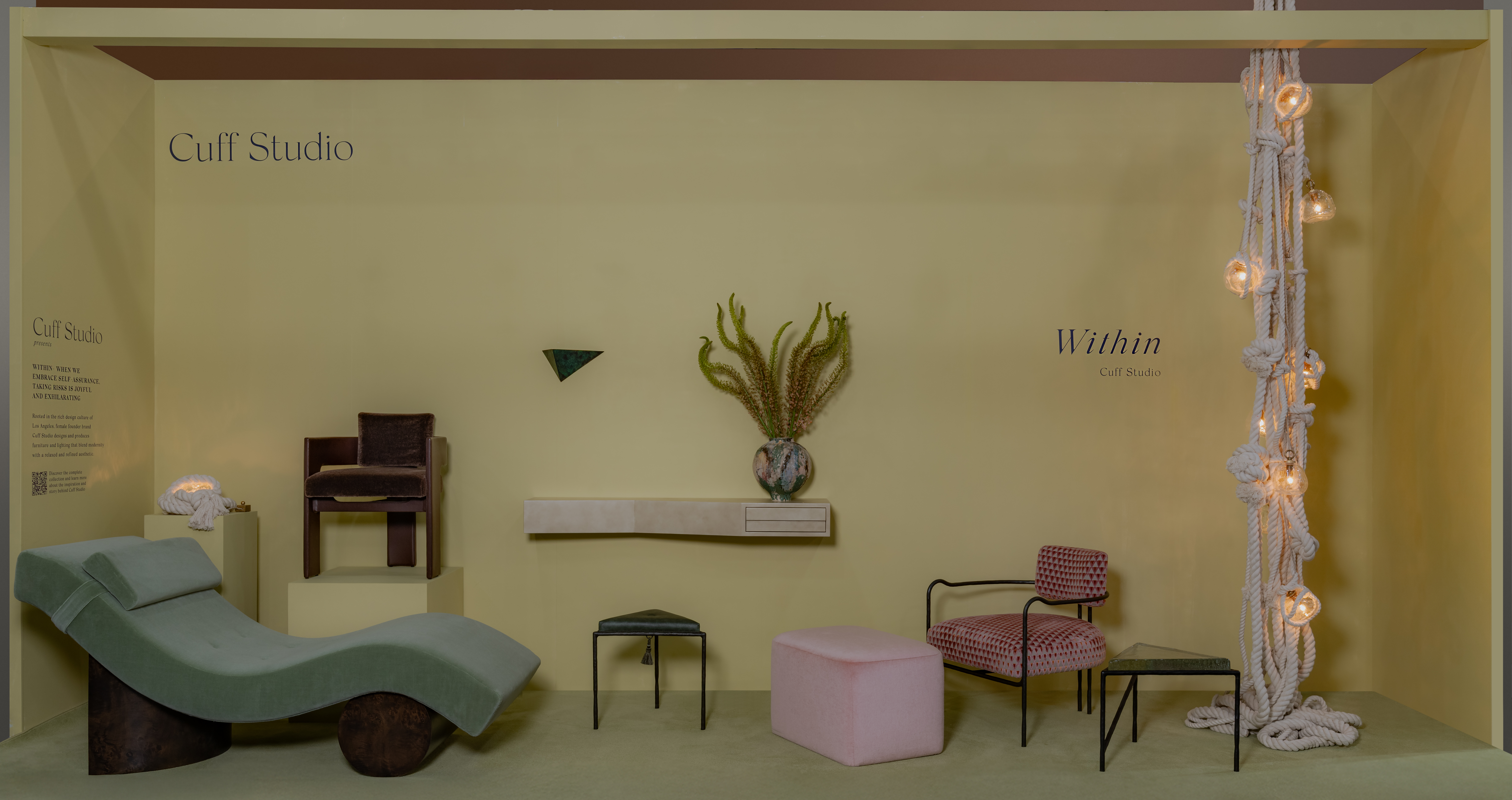 Five things we loved at ICFF this year
Five things we loved at ICFF this yearFrom ceramic sconces to inflatables, here's the furniture and lighting that caught our eye
-
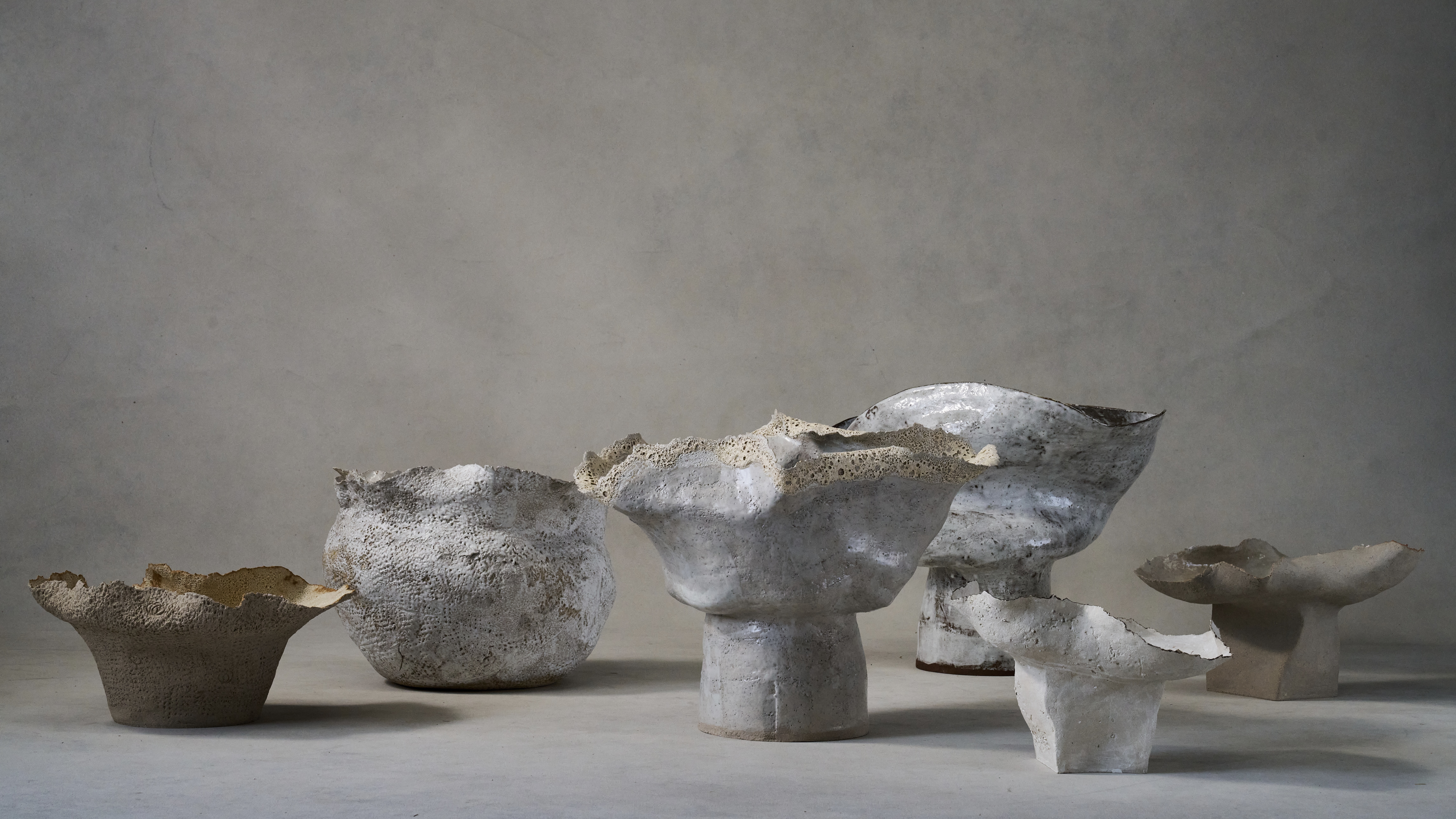 Ludmilla Balkis’ organic, earthy ceramics embody the Basque countryside
Ludmilla Balkis’ organic, earthy ceramics embody the Basque countrysideThe sculptor-ceramicist presents a series inspired by and created from found natural objects in a New York exhibition
-
 Designer Danny Kaplan’s Manhattan showroom is also his apartment: the live-work space reimagined
Designer Danny Kaplan’s Manhattan showroom is also his apartment: the live-work space reimaginedDanny Kaplan’s Manhattan apartment is an extension of his new showroom, itself laid out like a home; he invites us in, including a first look at his private quarters
-
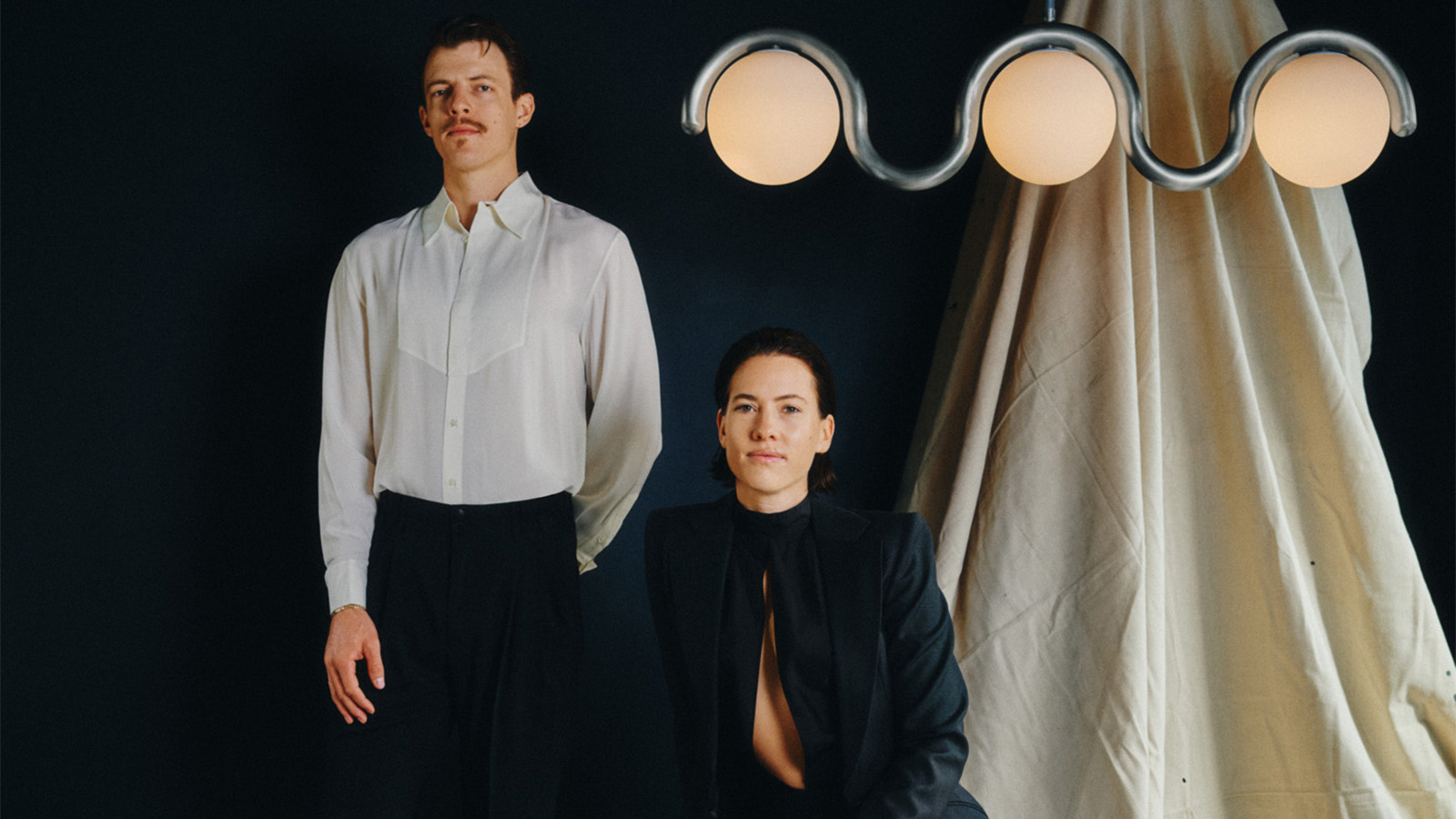 Design practice Astraeus Clarke is inspired by cinema to tell a story and evoke an emotion
Design practice Astraeus Clarke is inspired by cinema to tell a story and evoke an emotionIn a rapidly changing world, the route designers take to discover their calling is increasingly circuitous. Here we speak to Chelsie and Jacob Starley the creative duo behind Astraeus Clarke
-
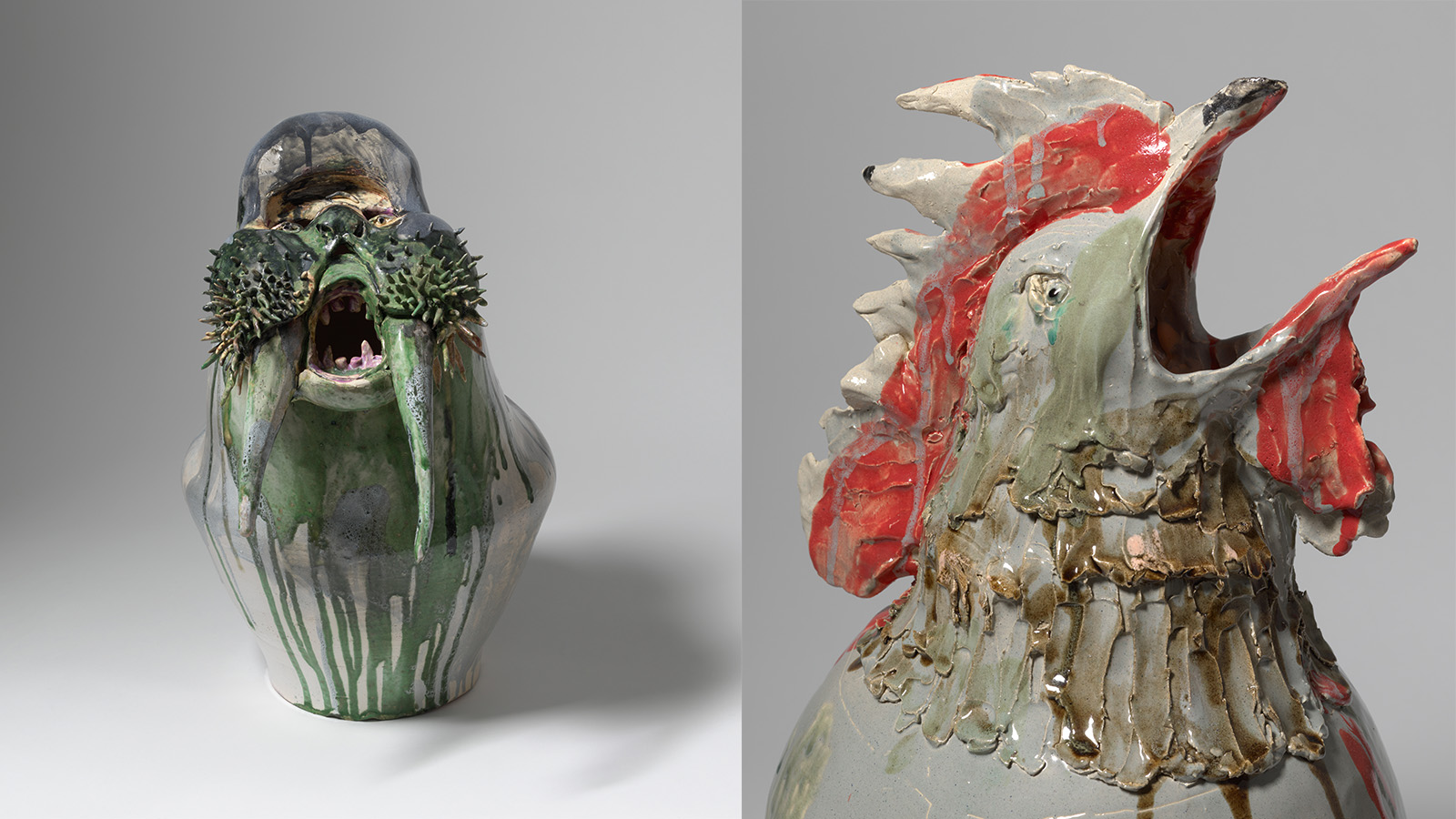 Hella Jongerius’ ‘Angry Animals’ take a humorous and poignant bite out of the climate crisis
Hella Jongerius’ ‘Angry Animals’ take a humorous and poignant bite out of the climate crisisAt Salon 94 Design in New York, Hella Jongerius presents animal ceramics, ‘Bead Tables’ and experimental ‘Textile Studies’ – three series that challenge traditional ideas about function, craft, and narrative
-
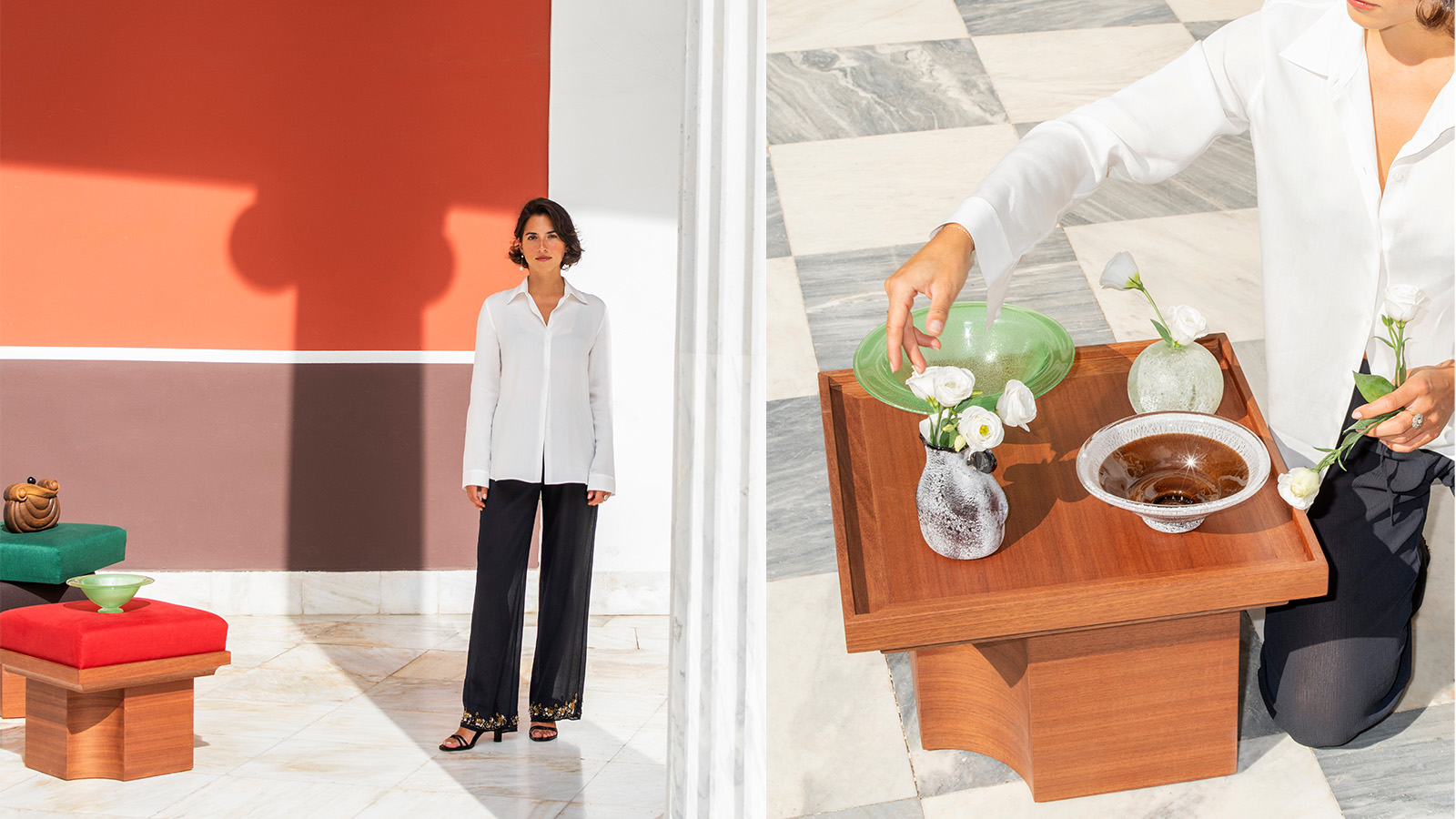 One to Watch: designer Valerie Name infuses contemporary objects and spaces with historical detail
One to Watch: designer Valerie Name infuses contemporary objects and spaces with historical detailFrom vessels to furnishings and interiors, New York- and Athens-based designer Valerie Name finds new relevance for age-old craft techniques
-
 First look: Matthew Fisher opens the doors to his first gallery in Manhattan
First look: Matthew Fisher opens the doors to his first gallery in ManhattanHistory, design, and environmental consciousness converge at M. Fisher in New York City, offering an experience that is as meaningful as it is visually striking